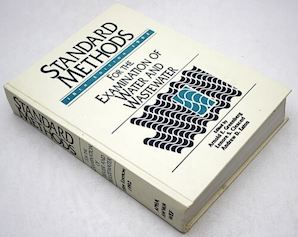
Curated with aloha by
Ted Mooney, P.E. RET

The authoritative public forum
for Metal Finishing 1989-2025

-----
Conductivity: microsiemens converted to megaOhms
Q. Hi!
My question concerns Conductivity/Resistivity. I need to convert microsiemens to megaohms ... Are they 1:1? Or am I losing my mind?
Any help would be great!
Thanks,
Sandie [last name deleted for privacy by Editor]dairy farm - Fort Atkinson, Wisconsin
2002
A. Sandie,
No, it is not a 1:1 conversion. Microesiemens are measuring conductivity, while megaohms are measuring resistivity. Go to:
www.peunh.com/peu/charts/cond.html ⇩
... there is a handy little conversion chart for you.
Hope this helped.

Marc Green
anodizer - Boise, Idaho
Ed. update: That link is now broken. Don't follow broken links: malware is often put on them. Thankfully, The Internet Archive archived a copy of the original page. If it is a concern to you that information appears on the internet then disappears forever, please consider a donation to The Internet Archive.
Convert microsiemens to millivolts
Q. In the context of an environmental baseline study, I have been measuring conductivity (as well as many other biotic and abiotic variables) at different points along a desert river in northern Chile. For this I am using a portable instrument (Hanna) and the units are mS/cm (micro Siemens/centimeter). I need to compare these values with a previous study, but the units used in that study are mV (millivolts).
My question is how to convert mV into mS/cm?
I appreciate any help with this
Sincerely,
Alvaro Palma BehnkeUniversidad Andrès Bello - Santiago, Chile
2005
A. Hello,
It sounds like you are using two different measurements. The mV reading is probably ORP which is not directly related to conductivity. One can prepare solutions of identical conductivity but different ORP, for example.
Hope this helps,
- Watertown, Connecticut, USA
A. Hi Alvaro. Robert is surely right that the units can't be "converted" because they are not the same thing (you can convert inches to centimeters but you can't convert inches to grams).
But I'm not sure that you'd be on the right track assuming that the previous study was investigating ORP (oxidation-reduction potential). I would guess that the previous researchers were also dealing with conductivity, but were measuring it using a voltmeter with a special probe, and that the millivolts on the meter scale did correspond with a specific conductivity ... but that you can only find that relationship within their report or the instructions for the probe they used.
Regards,

Ted Mooney, P.E.
Striving to live Aloha
finishing.com - Pine Beach, New Jersey
Diluting a Sample For Conductivity Measurements
Q. Please I want to find out if it is proper to dilute a water sample with distilled water before measuring Conductivity if the conductivity range of the sample is higher than the range of the conductivity meter, and afterwards multiplying by the dilution factor.
Osakwe JosephEnvironmental Chemist - Port Harcourt, Rivers State, Nigeria
2007
A. Sure, that's fine. Just make sure the water you're diluting with is pure enough so that it doesn't itself add any conductivity.

Dave Wichern
Consultant - The Bronx, New York
AWWA

on AbeBooks
or eBay or
Amazon
(affil links)
A. Dilution is a standard procedure, also used in calibrating conductivity meters using KCl standard solutions. A correction can be made for the conductivity of the dilution water; see
'Standard Methods ...', (American Public Health Association, Washington, DC) ⇨
Using high purity diluent water (freshly boiled & cooled distilled water or good quality DI water, the error is usually negligible for samples having conductivities > 90 microSiemens/cm and within the pH range 6-9.
See also ASTM D1125, 'Standard Test Methods for Electrical Conductivity and Resistivity of Water.'
- Goleta, California
Rest in peace, Ken. Thank you for your hard work which the finishing world, and we at finishing.com, continue to benefit from.
A. Osakwe, if you are reporting your results to a government entity you might want to explain to them your method and see if they'll accept it before charging into anything. Especially if it's something you have to sign your name too. Or obtain a meter with a larger range.

Sheldon Taylor
supply chain electronics
Wake Forest, North Carolina
Differing conductivity measurements of water
ACRONYMS:
DM = demineralization
RO = reverse osmosis
EDI = electrodeionization
Q. In our DM water plant the conductivity of RO water is between 8-9 micro siemens, but EDI outlet conductivity is not lowering from 2 micro siemens. Is there any solution how to do this?
Manoj Chandraemployee - Dehradun, Uttrakhand, India
October 1, 2009
A. The likely cause is dissolved carbon dioxide gas. You need to check for this in your RO permeate. Since it is non ionic at the relatively low pH of RO permeate, it doesn't show as conductivity at this point. However, it does become ionic again near the exit point of an EDI stack, and if present in too high a concentration, will result in low resistivity in the treated water.
You my need to install a membrane de-carbonator before the EDI in order to achieve high resistivity water.
consultant - Cleveland Heights, Ohio
Meters for testing low conductivity solutions
Q. What is the best meter to test distilled water that needs to be >500,000 ohm cm?
Gary Smithplating shop employee - Everett, Massachusetts, USA
October 4, 2011
A. Virtually all of the popular conductivity or resistivity meters are accurate in this range, provided that they have temperature compensation.
However for water with a resistivity of > 5 Meg-Ohm-cm, you need a meter that is designed and calibrated for high purity water. Above this range of purity, the temperature compensation algorithm is different than it is for lower resistivities.
consultant - Cleveland Heights, Ohio
What does µS mean?
Q. What does microS (µS) mean?
It is displayed on the readout of our RO system.
CLINICAL LAB - HILLSBOROUGH, North Carolina USA
September 5, 2014
A. Hi Dirk. We appended your inquiry to a thread which explains that µS is an abbreviation for microSiemens which is a conductance unit and the reciprocal of megaOhms resistance. I.e., 1 µS = 1/megaohms; 2 µS = .5 / megaohms; .1 µS = 10/megaohms.
Regards,

Ted Mooney, P.E.
Striving to live Aloha
finishing.com - Pine Beach, New Jersey
A. The answer to his question of how mico-siemens correlate with megohms is incorrect by 10%. In other words the statement "1 µS = 10/megaohms" is incorrect. The correct answer is: 1 microsiemen = 1 megohm and of course they are inverse of each other.
Keith Allred- Woods Cross, Utah
March 15, 2024
![]() Hi Keith.
Hi Keith.
The answer wasn't mathematically wrong, but yes it was poorly written :-)
0.1 µS does in fact equal 10/megohms, but it should indeed have been written as "0.1" not just ".1" to prevent just this misunderstanding :-(
Luck & Regards,

Ted Mooney, P.E. RET
Striving to live Aloha
finishing.com - Pine Beach, New Jersey
Q, A, or Comment on THIS thread -or- Start a NEW Thread